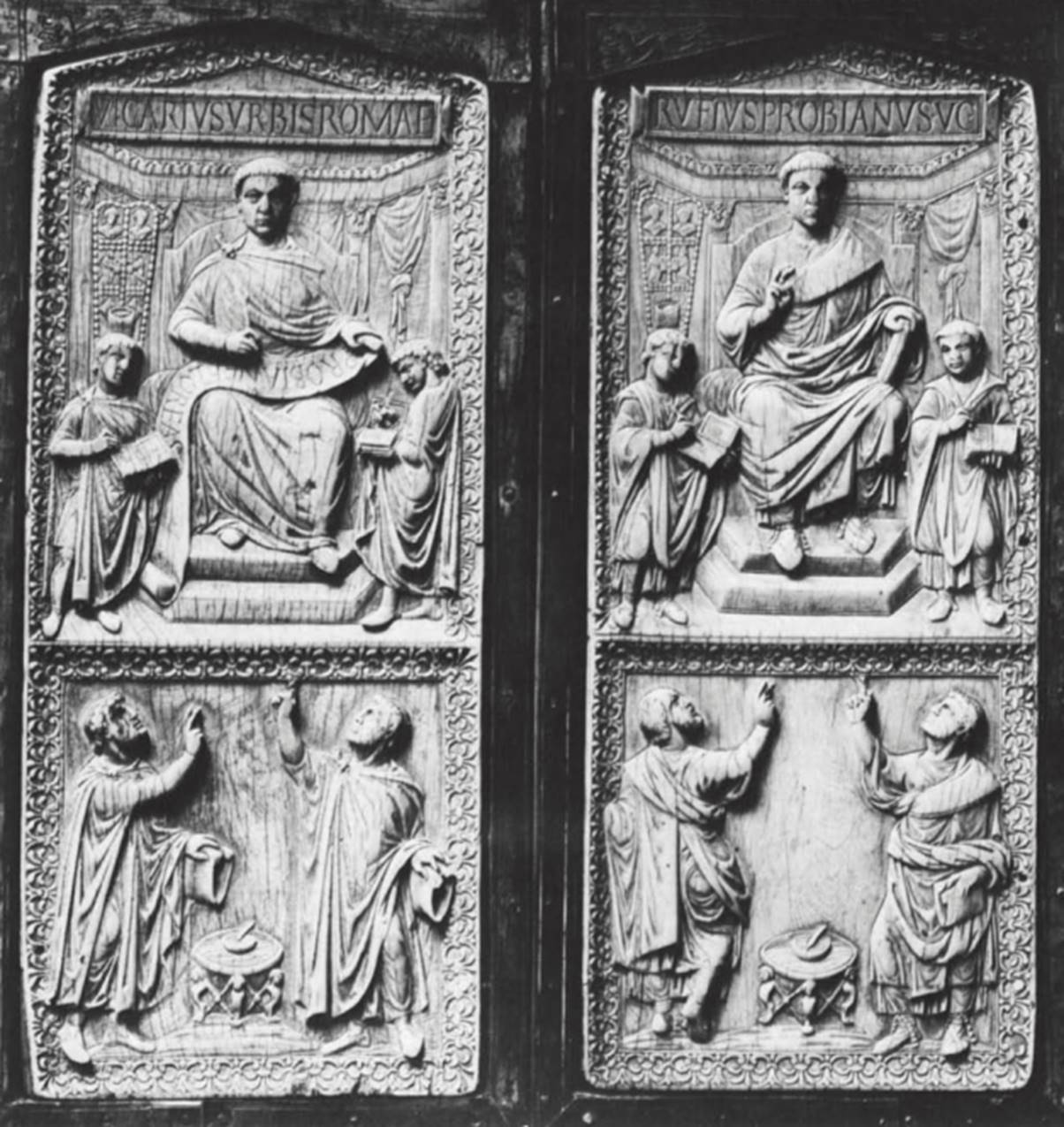Diptych of Probianus. Rome, about 400. Ivory
The diptych of Probianus announces his term as the vicarius of the city of Rome. Apart from the information supplied by the diptych itself, that Rufius Probianus held this post and that he was of the class of clarissimi, we know nothing about him, not even the exact dates of his term.
Probianus is portrayed as a serious man of middle age with a sparse beard and hair that is short in front and longer in back. His throne is raised on a tribunal slightly higher than the foreground figures and is framed by a baldachin hung with curtains. At Probianus' right are portrait stands with the busts of the emperors, and he is assisted on the dais by two secretaries taking notes in polyptica, practical relatives of the ceremonial ivory gifts. Despite the similarities in presentation, there are important differences between the two leaves.

On the front (left), Probianus displays on his lap the unrolled codicil, his imperial diploma of office, and he and the two men below congratulating him wear the chlamys, the dress of the court official. This garment and the title of office in the inscription (vicarivs vrbis romae) stress Probianus' official duties. The codicil is inscribed probiane floreas. On the rear leaf, which bears the vicar's name and rank, rvfivs probianvs v(ir) c(larissimus), the three main figures are dressed in the senatorial toga. Here, Probianus is receiving the congratulations of his peers, a mark of the honor accorded him.
The generally accepted date of around 400 was first established by Delbrueck ([1], 1952, pp. 165- 189). As he argued, the diptych is stylistically related to works firmly dated around the turn of the century. Given this approximate stylistic date, the double imperial busts shown suggest that Probianus was vicarius during the co-reign of Arcadius and Honorius, in 399-402. Other works in ivory have been attributed to the same workshop, among them the diptych leaf in Milan with the representation of the Women at the Tomb (no. 453); the Nicomachi-Symmachi diptych in Paris and London (nos. 165, 166); and the Probus diptych in Aosta (Volbach, 1976, no. 1). The Rothschild cameo in Paris (Delbrueck, 1933, p. 206 and pi. 105) also seems related.
By eleventh century in the Benedictine monastery of St. Liudger in Werden, as covers of an eleventh-century manuscript "Vita S. Liudgeri"; 1794-1800, in possession of Baron von Hiipsch in Cologne; 1800, returned to the monastery in Werden; 1803, Munster, Bibliothek der Konigli- chen Paulinischen Akademie; 1823, Berlin, Staats- bibliothek (Kongl. Bibl.).
Bibliography: Delbrueck, 1929, no. 65; Delbrueck (1), 1952, pp. 173-180; Beckwith (1), 1958, pp. 5-6; Aachen, 1965, no. 501; Volbach, 1976, no. 62, pi. 18.
Date added: 2025-07-10; views: 186;
